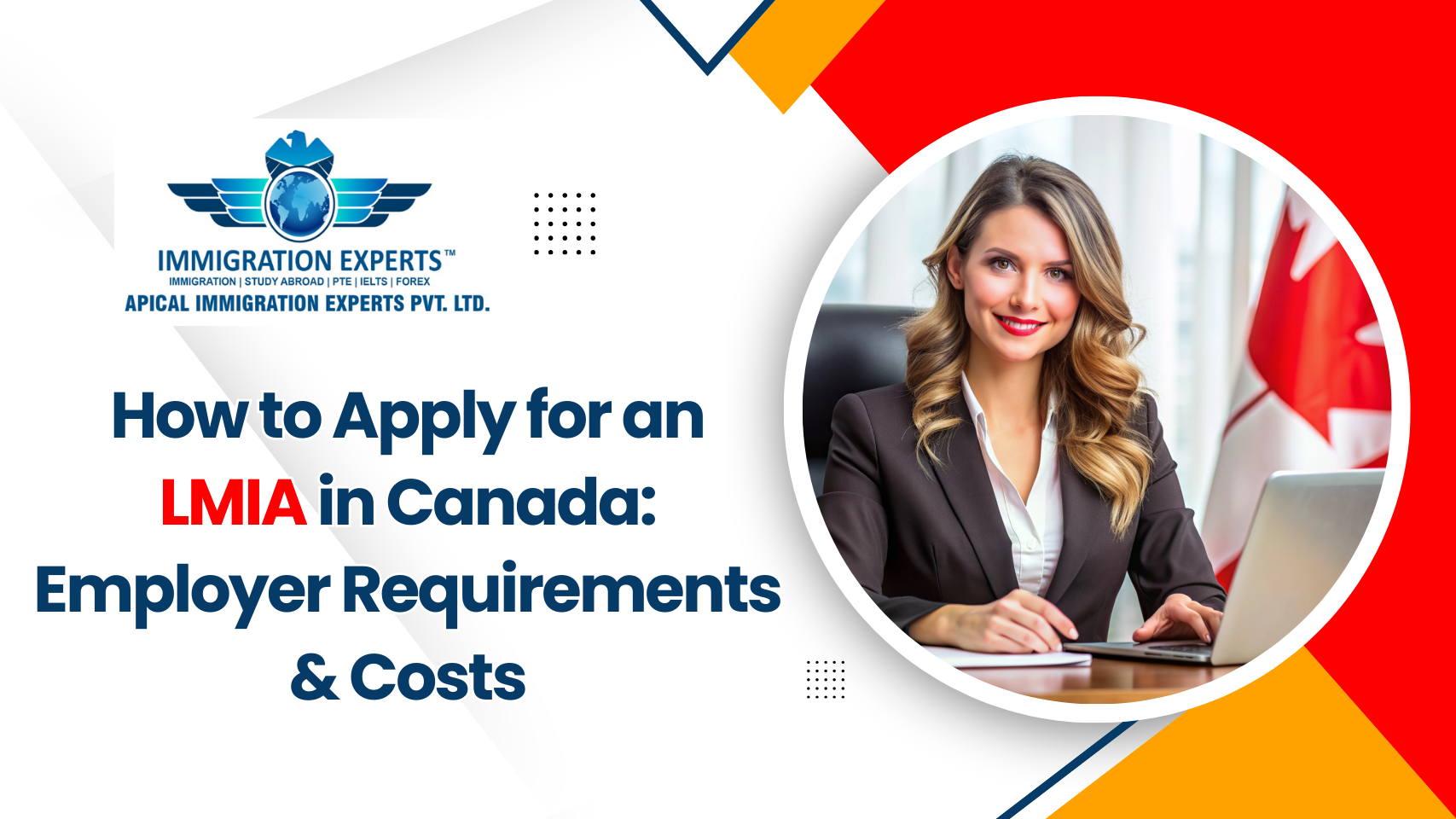If you are a Canadian employer planning to hire a foreign worker, you may need to get a Labour Market Impact Assessment (LMIA) first. This document proves there is a genuine need for hiring from outside Canada. It also shows that no Canadian worker is available for the job.
This guide will explain the LMIA process, employer requirements, application steps, and costs. By the end, you will know exactly what to expect and how to apply.
What is an LMIA?
An LMIA is an official approval from Employment and Social Development Canada (ESDC). It allows an employer to hire a foreign national for a specific role. The LMIA confirms that:
- There are no Canadian citizens or permanent residents available for the position.
- Hiring a foreign worker will have a positive or neutral impact on the Canadian job market.
Without a valid LMIA, many foreign workers cannot get a Canadian work permit.
Must Read: Latest LMIA Reforms 2025: What Indian Applicants Should Know
Who Needs an LMIA?
Most employers hiring through the Temporary Foreign Worker Program (TFWP) need an LMIA. However, some roles under the International Mobility Program (IMP) are LMIA-exempt.
You likely need an LMIA if:
- You are hiring for a high-wage or low-wage position under the TFWP.
- The role is seasonal or in-demand in Canada.
- You want to hire a foreign caregiver, agricultural worker, or skilled tradesperson.
Employer Requirements for LMIA
To get an LMIA, employers must meet strict rules. These requirements help ensure fair hiring practices and protect the Canadian labour market.
-
Job Advertisement and Recruitment
You must advertise the position for at least four weeks before applying. The job posting must appear on:
- The Government of Canada’s Job Bank.
- At least two other recruitment platforms.
You also need to show proof of your recruitment efforts and why no Canadian worker was hired.
-
Wages and Working Conditions
The offered wage must meet or exceed the median wage for that occupation in your region. You must also provide safe working conditions and follow all employment standards.
-
Transition Plan
For high-wage positions, you must submit a transition plan. This shows how you will reduce your reliance on temporary foreign workers over time.
-
Compliance with Program Rules
You must have a clean compliance record with ESDC. Employers who have broken labour laws may be banned from hiring foreign workers.
Step-by-Step LMIA Application Process
Applying for an LMIA involves several steps. Here is a simple breakdown:
Step 1: Check the Position Type
Identify whether the role is high-wage, low-wage, seasonal, or agricultural. Each has its own application process and requirements.
Step 2: Post the Job
Advertise the position for at least four weeks using the required channels. Keep detailed records of all applications and interviews.
Step 3: Prepare the Application Package
Your LMIA application must include:
- Completed LMIA application form.
- Proof of recruitment and job advertisements.
- Business licence or registration documents.
- Transition plan (for high-wage positions).
- Proof of wages and working conditions.
Step 4: Pay the Processing Fee
Most LMIA applications require a $1,000 CAD fee per position. This fee is non-refundable, even if the application is refused.
Step 5: Submit to ESDC
Send your complete application to the correct Service Canada processing centre. Make sure all forms are accurate to avoid delays.
Step 6: Wait for a Decision
Processing times vary depending on the stream. Some applications take a few weeks, while others can take several months.
Step 7: Provide the LMIA to the Worker
If approved, you will receive a positive LMIA. Share this with the foreign worker so they can apply for a work permit.
LMIA Processing Times
Processing times can vary based on demand and application type. In general:
- High-wage stream: 8–12 weeks.
- Low-wage stream: 10–14 weeks.
- Agricultural stream: Faster processing in some cases.
- Global Talent Stream: 2 weeks.
LMIA Costs for Employers
The main cost is the $1,000 CAD processing fee per position. Other possible expenses include:
- Job advertising costs.
- Recruitment agency fees (if used).
- Legal or immigration consultant fees for application support.
Employers are not allowed to charge these fees to the foreign worker.
Common LMIA Mistakes to Avoid
Many LMIA applications get refused due to avoidable errors. Watch out for these common mistakes:
- Incomplete or incorrect forms.
- Failure to advertise the job correctly.
- Offering wages below the median rate.
- Not including all required supporting documents.
Tips for a Successful LMIA Application
- Plan early – Start your recruitment process at least two months before applying.
- Stay organized – Keep all proof of recruitment and job postings.
- Meet wage requirements – Check the median wage for your region before making an offer.
- Work with experts – An immigration consultant or lawyer can help reduce errors and delays.
Final Thoughts:
Applying for an LMIA in Canada can be complex. Employers must follow strict recruitment and wage rules, submit a detailed application, and pay the required fees. By understanding the process and meeting all requirements, you can increase your chances of getting a positive LMIA decision.
If you are unsure about your eligibility or need help with the application, consulting a licensed immigration expert can save you time and stress. For more info, just call us at +91-8447-696555






